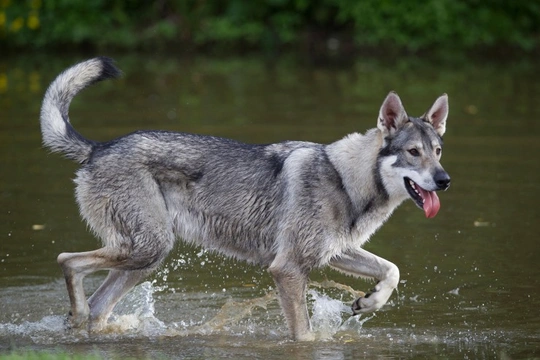
Eight top facts about the Northern Inuit dog - the Game of Thrones Dire wolves
The Northern Inuit dog is a large, shaggy-looking spitz type dog that was originally formulated from the crossing of Siberian huskies, German shepherds, and a range of Inuit dog breeds that often vary from case to case. Generally dogs of this type contain ancestry from at least one other breed, such as the Alaskan malamute, and the sheer range of different pairings and crosses available make the Northern Inuit dog genetically very diverse, and generally very healthy as a result of this.
While they are not one of the best well known of breeds in the UK, the chances are that you have been watching the story of several dogs of the breed closely-albeit unknowingly-in the popular TV show Game of Thrones, where the Northern Inuit dog breed takes a starring role!
In this article, we will share eight top facts about the breed for those who may be interested, and want to find out more!
The Northern Inuit dog is not a recognised breed
First of all, the Northern Inuit dog is not recognised as a formal, pedigree breed by any of the major kennel clubs, because the breed is very young-it only began development during the 1980’s, and while enthusiasts of dogs of the type are working hard to standardise the breed and so, achieve formal recognition for it, this process takes a long time.
The Northern Inuit breed, or rather type, is that of a large spitz-type dog, and the two main breeds that it is comprised of are the Siberian husky and the German shepherd. Other spitz-type breeds that are sometimes thrown into the mix include the Alaskan malamute, and the Alaskan klee kai.
They were originally bred to appear wolf-like
The original purpose of breeding the Northern Inuit dog was to create a dog that looked like the European grey wolf, while still making a good pet and not taking on any wolf-like traits! The Siberian husky of course shares some physical similarities with wolves at a glance, although they are more rounded and less lean than the average wild wolf.
The German shepherd too has the height, build, tail and ears to carry off a somewhat wolf-like appearance, and these factors were important during the early days of the formation of the breed.
They are not wolf crosses
While the Northern Inuit dog’s appearance, especially given their presence and size may be very wolf-like, they are not a wolf-dog hybrid, and wolves were not used as part of the development of the breed.
It is of course possible that somewhere along the line, a wolf-dog or a dog with partial wolf ancestry was mixed into the gene pool, but this was not deliberate in terms of the formulation of the breed, and is not one of the breed’s traits.
Northern Inuit dogs play the Dire Wolves on Game of Thrones
As mentioned earlier on, if you are a fan of the wildly popular Game of Thrones TV series, you have probably been following the storyline concerning the Stark family and their dire wolf pets with interest.
The dire wolves in Game of Thrones are played by Northern Inuit dogs, as the Northern Inuit was considered to be the dog type that looked most wolf-like and impressive, while still being trainable and able to act the role!
This has in turn of course raised the profile of the breed and increased interest in them, and the Northern Inuit dog is now gaining a lot of attention worldwide that will likely lead to a boom in ownership of dogs of the breed.
They shed a lot of hair!
As anyone who has ever owned a Siberian husky or a German shepherd will know, both breeds shed hair prolifically all year round, and twice a year when they go through their seasonal shed, they will lose most of their coat all in one go over the course of a couple of weeks.
This means that the Northern Inuit dog too will shed a lot of hair as well, and they need regular brushing, grooming and trips to the grooming salon in order to keep them tidy and in good condition!
They have masses of energy
Siberian huskies are one of the most high-energy of all dog breeds, and they also have bags of endurance, and do not tire out after an hour or so of sedate walking. If you aspire to owning a Northern Inuit dog, you will need to be prepared to spend plenty of time walking and entertaining them!
They like a lot of company
Once again, the Siberian husky side of the Northern Inuit dog’s heritage means that they are used to working in a pack and spending a lot of time around other dogs. While they can be kept without another dog, they will need lots of company and entertainment, and ideally, a canine pal for company as well-if you can manage two of them!
They are very smart
Northern Inuit dogs are composed of the crossing of a range of clever, sharp dog breeds that are good at problem solving, following commands and learning new things, which are all traits that the Northern Inuit dog shares as a result of this



